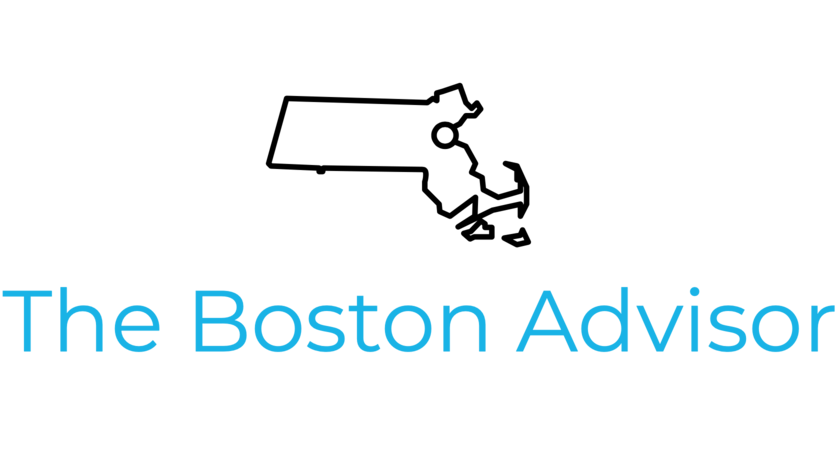How to Use Debt to Build Wealth
Debt helps build wealth. It’s also complicated since it means borrowing money and paying interest. Some people fear this, since debt can multiply your losses and wipe you out. This all leads to a capital source that is misunderstood, underused, and overused. Let’s strip out the emotion and talk about using debt smartly for your situation.
Debt Pros & Cons
You can build wealth with debt.
A $10,000 investment that earns 10 percent generates $1,000. Ten thousand dollars used as collateral to borrow another $10,000 in the same investment generates $2,000 minus the borrowing cost.
Debt also magnifies losses.
Borrowing $10,000 and investing in something that loses 100 percent leaves you not just broke, but $10,000 in debt.
Leverage is addictive. And history is full of smart people who got wiped out by borrowing too much. Read The Quants and When Genius Failed, two fantastic books about investment “geniuses” who blew up this way.
That doesn’t mean you should ignore debt. Strong capital allocators don’t ignore tools. Borrow when it makes sense either because the chance to make money is high or the borrowing costs are low.
Learn how to do this analysis on using debt smartly to build wealth for yourself by following these guidelines.

Borrowing for Protection
Borrow for protection, not just to capitalize on opportunities. In 2006, Ford Motor Company’s then CEO, Alan Mulally, made a capital allocation decision regarding debt that’s been called one of the most significant moves in the company’s history. When borrowing was easy, Mulally mortgaged the company’s assets, including the Mustang brand name and Ford logo, for $23.6 billion in loans to finance a company overhaul and to give Ford a significant cash safety net. We now know that a severe recession came soon after. Car sales plummeted. General Motors and Chrysler, Ford’s domestic competitors, sought bankruptcy protection and received billions of dollars in a controversial government bailout. Ford did not have to do either of these things thanks to its cash hoard. It emerged from the crisis stronger, which helped its image, reputation, and stock price.

HELOC’s
Individuals can do something similar by setting up lines of credit when times are good in case they’re needed for bad times. One of the most common sources of credit lines available to individuals is a home equity line of credit (HELOC), which allows you to borrow against your home equity. Once it has been established, you can borrow up to the limit or never tap into it at all. There’s a draw period of ten years, after which you enter a repayment period for up to twenty years, although you can always make payments against the line during the draw period.
Most HELOC lenders lend up to 85 percent of your home equity. For example, if your home is worth $500,000 and you have a $250,000 mortgage on it, your equity is $250,000, and 85 percent of that is $212,500. Besides your home equity, the lender evaluates your credit score and history, work history, income, and current debt.
HELOC rates are variable, meaning that, as interest rates increase or decrease, the loan rate moves accordingly. It is based on some standard index like the US prime rate plus whatever margin the lender adds. Rates vary widely, so it’s important to shop around. Some lenders offer introductory rates. Check the fine print to see what those rates will adjust to after the honeymoon period.
Borrowing to Make Money

Debt is a source of capital for investing, but you need to decide the right debt levels for your capital allocation plan. It’ll be less than the maximum amount of debt you can borrow. Adding debt increases risk to a company and its shareholders, and it does the same to an individual. Yes, you can build wealth with debt, but you need to exercise caution, ensure the debt is worth the risk, and borrow safely.
Corporate capital allocators can rely on established corporate finance best practices to determine optimal debt levels for their situation. Those corporate debt ratios are determined on the basis of how stable the company’s cash flow is, what return they are targeting with the debt, and how tolerant the management and owners are of borrowing. Individuals can use a similar framework to guide their own borrowing decisions.
In The Value of Debt, Thomas J. Anderson suggests that, based on applying the principles of corporate debt management to individuals, the optimal debt ratio for a wealthy individual is around 25 percent, usually ranging from 15 percent to 35 percent. The debt ratio is calculated by dividing your total debt by your net worth.
That range of 15 percent to 35 percent is a helpful target but also a wide one. Anderson recommends working with a financial advisor to personalize a target for yourself based on your situation, similar to how a corporation would do it. The factors below can facilitate that conversation about using debt smartly.
Factors to Consider
Stability and strength of cash flow
Rarely do smart individuals get loans they can’t pay principal and interest on with their current income. The main way debt becomes a serious problem is when one’s income unexpectedly drops, but those monthly payments still need to be made. It’s therefore logical to assess the stability of your cash flow. The more consistent cash flow you have, the more you can borrow, because covering the payments will not be a challenge.
High job security and strong income make it easier to borrow. A lower paying job, variable pay, and less job security should lead to less borrowing. Stress test your cash flow and compare it to your total debt payments to make sure you can maintain your standard of living and make your debt payments if your income drops. Factor these debt payments into how much cash you’re targeting as a rainy day fund. If your income were interrupted for six to twelve months, could you continue to make the debt payments?
Expected returns
So far we’ve discussed debt’s pros and cons, how borrowing for protection works, how to create your own ideal debt to net worth ratio, and now we’re turning to using debt to build wealth. Using debt smartly means understanding that your opportunity cost is what you could have done with the debt instead. You should only borrow for investments that are going to pay you a high return since you don’t want to waste your limited borrowing power chasing low returns.
This wealth management checklist can help guide your debt decisions and make sure you're on the right track financially.And please don’t borrow to chase negative returns, meaning to spend, unless you’re doing so for an essential purpose, like a home or a car, at a low enough rate that it’s smarter to borrow and leave your money invested.
Once you have a high returning investment targeted, you still need to make sure you borrow within safe limits. Great return potential doesn’t change the maximum amount you can safely borrow. It’s a maximum for a reason. The path to bankruptcy is paved with people who borrowed too much to invest in great ideas.
Personal preference
Your personal preference matters. Debt is a tool. Used correctly, it can make you money. Used poorly, it can wipe you out. Good capital allocators are open-minded and opportunistic. They don’t shut the door on any tool, but they also don’t fall blindly in love with any. I’d love for you to be the same way, but I also know that some people are uncomfortable borrowing money, may have a religious objection to it, or just can’t sleep at night when in debt. We’re trying to make you wealthy, not miserable. We’re also trying to create strategies you can stick to. Something you enter into reluctantly is probably not something you’ll commit to over the long term. And you need to be able to commit. It’s rare for an investment idea to immediately pay off, so you’ll have those loans for a while.
Margin Loans
Margin loans, or borrowing against your taxable portfolio, are similar to HELOCs; your brokerage firm will allow you to borrow using your investments as collateral. This cannot be done with retirement accounts, since to borrow against retirement accounts causes them to lose their tax-advantaged status. Like other debt sources, margin should be used carefully since it can put your portfolio at risk for large losses. However, within reasonable limits, it’s another way to use debt to build wealth.
A margin loan is an adjustable rate loan. The Value of Debt summarizes its advantages: no expenses or costs when you don’t use it, no prepayment penalties, no credit fees, no application fees, and no underwriting, and the loans aren’t reported to the credit bureaus. You also don’t have to make any scheduled payments against interest or principal. The first considered use of it should be as a line of credit, similar to a home equity line. In the event you need short-term funds, you can temporarily withdraw them on margin and pay it back later.
You can also invest on margin. You’re typically allowed to borrow up to 50 percent of your portfolio value, although you need to be well below that threshold to avoid a margin call, which can happen if your portfolio equity falls below a certain threshold—typically, 25 percent to 40 percent; let’s use 33 percent here.
Margin Example
If you have a $1 million portfolio and borrow $500,000 to purchase more investments, you have portfolio equity of $1,500,000 and a $500,000 loan—exactly 33 percent of your equity. If the portfolio value decreases so that you fall below the 33 percent line, you will have to sell securities at a loss to pay down the loan or add cash to the account—two negative outcomes we won’t risk. Let’s say that, instead of the $500,000 loan, you borrow $200,000. Your equity is now $1.2 million. Your margin is $200,000. The investments would have to decrease by 50 percent for you to have a margin call. It’s possible to have a 50 percent loss but much more difficult, particularly if you don’t concentrate your portfolio and diversify it beyond stocks.
You can also use margin to make investments outside your portfolio. This won’t increase your portfolio equity, so the math is different. For example, in the $200,000 loan scenario, you have borrowed 20 percent of the equity in the portfolio. A portfolio loss of 40 percent to $600,000 would put you at the 33 percent maintenance requirement—too close for comfort. You’ll need to borrow less if you are investing outside of your portfolio.
Conclusion
All debt decisions are difficult, because debt provides potential advantages that can easily become concrete disadvantages. Understand the pros and cons, evaluate based on the current environment and opportunity, borrow limited amounts, consider worst-case scenarios, and create the right plan for using debt smartly to build wealth.
Further Reads
Your Financial Planning Checklist
